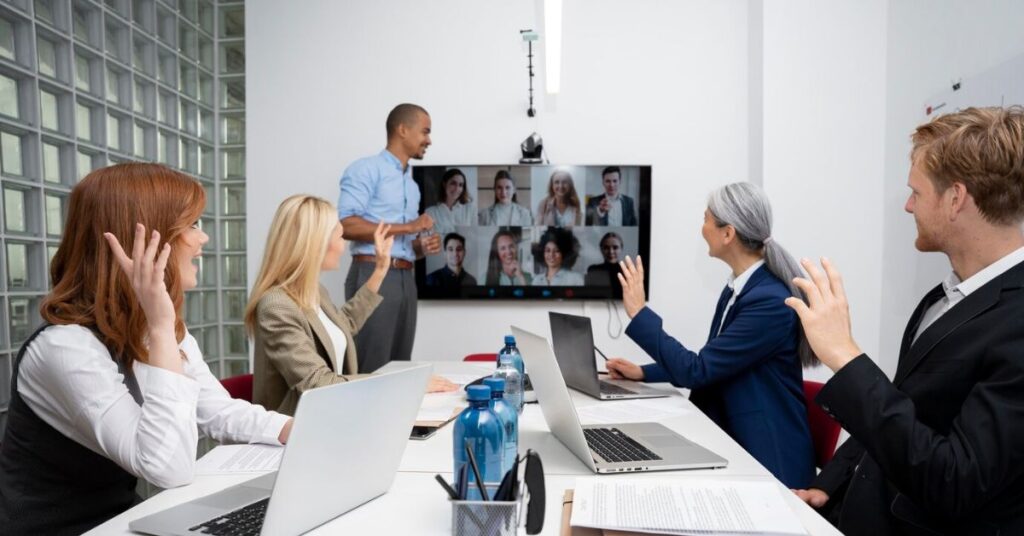The traditional corporate leadership model has undergone a seismic shift in recent years, with remote work becoming the standard rather than the exception. While many organizations initially adopted remote work as a temporary solution, it has now evolved into a strategic choice that impacts leadership styles, team dynamics, and business operations.
As technology advances and companies prioritize flexibility, executives must navigate new challenges to maintain efficiency, engagement, and company culture.
This transition to a remote-first environment requires leaders to adapt their strategies, placing greater emphasis on communication, digital collaboration, and employee well-being. The physical absence of a centralized office means leadership must focus on results rather than time spent at a desk.
Additionally, hiring and retaining top talent have become more competitive as remote work expands the talent pool beyond geographical constraints. These changes demand a reevaluation of leadership approaches to ensure businesses continue to thrive in an increasingly digital and dispersed world.
The Role of Higher Education in Developing Effective Remote Leaders
Corporate leadership in a remote-first world requires a new skill set, blending traditional management expertise with modern digital proficiency. As organizations adapt to this reality, executives must continuously refine their leadership abilities to keep pace with shifting demands. Higher education remains a critical tool in achieving this, equipping leaders with the knowledge, strategic thinking, and decision-making skills required in a virtual work environment.
For executives pursuing an executive MBA distance learning provides a way to study remotely while working full-time. This approach allows them to gain valuable leadership insights without stepping away from their professional responsibilities.
As remote leadership requires adaptability and a strong understanding of digital collaboration, these programs offer a structured environment where executives can refine their ability to manage teams, make data-driven decisions, and foster company culture in a remote-first world.
Communication Strategies for Remote Leadership
Effective communication is the foundation of successful leadership, and in a remote-first world, its importance is amplified. Without the convenience of in-person interactions, leaders must develop clear, concise, and consistent communication strategies to keep teams aligned and engaged.
One of the most significant challenges of remote leadership is overcoming the barriers of digital communication. Without body language and immediate feedback, messages can be misinterpreted, leading to confusion and decreased morale. To address this, leaders must prioritize clarity in their messages, using structured formats to avoid misunderstandings. Regular check-ins, whether through video calls or asynchronous updates, help maintain alignment and ensure all team members remain on the same page.
Fostering Employee Engagement and Productivity
One of the biggest concerns for leaders in a remote-first world is maintaining employee engagement. Without a physical office environment, some employees may feel disconnected from their teams and company culture. Ensuring employees remain motivated and productive requires a proactive approach.
Recognition and appreciation play a significant role in remote leadership. Leaders should regularly acknowledge employees’ contributions through virtual shoutouts, performance incentives, or team celebrations. Simple gestures like recognizing hard work during a team call or sending personalized messages of appreciation can go a long way in boosting morale.
In addition to recognition, fostering a sense of community within remote teams is essential. Virtual team-building activities, informal chats, and social check-ins help bridge the gap created by physical distance. Encouraging employees to interact beyond work-related discussions creates a stronger team dynamic, making remote collaboration more seamless.
Adapting Leadership Styles for a Remote Workforce
The shift to remote work has necessitated an evolution in leadership styles. Traditional command-and-control approaches no longer align with the needs of a distributed workforce. Instead, leaders must adopt a more trust-based, results-oriented approach.
Empowerment and autonomy have become central to remote leadership. Employees should be trusted to manage their tasks and schedules without excessive micromanagement. Leaders who focus on outcomes rather than tracking hours worked create an environment where employees feel valued and self-motivated. Setting clear goals and expectations allows employees to take ownership of their work while maintaining accountability.
Leveraging Technology for Seamless Remote Leadership
Technology serves as the backbone of remote-first leadership, enabling collaboration, communication, and efficiency. Leaders must stay informed about the latest digital tools and platforms to ensure their teams can operate smoothly in a virtual setting.
Project management software helps teams stay organized by tracking tasks, deadlines, and deliverables. By utilizing these platforms, leaders can maintain visibility into team progress without the need for constant check-ins. Similarly, cloud-based collaboration tools allow employees to work on documents in real time, reducing delays and ensuring seamless teamwork.
Video conferencing tools have become an essential part of remote leadership. While excessive meetings can lead to fatigue, strategically scheduled video calls help build connections and maintain team cohesion. Leaders should balance synchronous and asynchronous communication, allowing employees to focus on deep work without unnecessary interruptions.
The Future of Corporate Leadership in a Remote-First World
As remote work continues to shape the corporate landscape, leaders must remain adaptable and forward-thinking. The ability to embrace change, leverage technology, and prioritize employee well-being will define successful leadership in the coming years.
Organizations that invest in developing their leaders for a remote-first world will gain a competitive edge. By fostering a culture of trust, innovation, and continuous learning, businesses can thrive regardless of where their employees are located.







